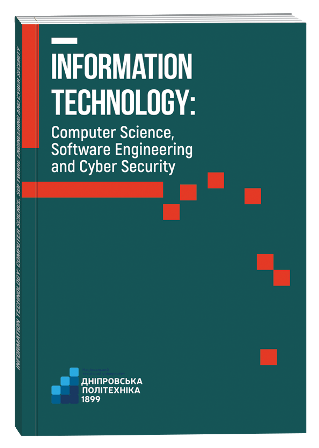IMPLEMENTATION OF PARALLEL MULTI-TASKING IN A REAL-TIME SYSTEM BASED ON A SINGLE-CHIP MICROCONTROLLER
DOI:
https://doi.org/10.32782/IT/2021-2-4Keywords:
single-chip microcontroller, multitasking, real-time mode, micro-OS.Abstract
The future of modern instrument development is in the creation of compact intelligent sensors and devices based on single-chip microcontrollers. These have the capability of implementing multitasking functionality. The software of such microcontrollers is critical in providing real-time operation in terms of minimal computing resources, which take into account the critical execution time of each of the tasks that the respective sensor or device implements. The aim of the work is to implement parallel multitasking in real-time systems based on a single-chip microcontroller. Realization of this set purpose decides the problem of creating a software mechanism which provides parallel coordinated performance of several tasks simultaneously at the minimum computing resources. It also takes into account restrictions on the reaction time of the system built on the single-chip microcontroller regarding external and internal events. The methodology for solving this problem is to identify the main types of problems in real-time systems and create a mechanism for coordinating their implementation, which requires a minimum of computing resources of the microcontroller. Scientific novelty. The article shows that the use of the principle of forced multitasking, which is based on time quantization and the use of algorithms with scheduling and displacing priority tasks, allows the implementation of real-time and quasi-parallel multitasking in systems on single-chip microcontrollers with minimal computing. Conclusions. The use of the proposed mechanism for implementing parallel multitasking for single-chip microcontrollers allows the user to effectively divide computing resources between tasks, ensure the operation of the system based on the microcontroller in real time and minimize the time spent on matching individual software modules.
References
Петин В.А. Проекты с использованием микроконтроллера Arduino. 2-е изд. перераб. и доп. Санкт- Петербург : БХВ-Петербург, 2015. 464 с.
Гололобов В.Н. IoT как ИНТЕРАНЕТ вещей с Rasbtrry Pi и MajorDoMo. Москва, 2019. 217 с. URL: https://www.razym.org/tehnicheskaya/electronika/397319-gololobov-vn-iot-kak-intranet-veschey-s-raspberrypi- i-majordomo.html.
Операционная система реального времени QNX Neutrino 6.3. Системная архитектура: Пер. с англ. Санкт-Петербург : БХВ-Петербург, 2005. 336 с.
Альтерман И.З. Программируемые контроллеры SIMATIC S7. 1-й уровень профессиональной подготовки S7_PROF1_PA. 2011. 68 с. URL: http://www.promautomatic.ru/catalog/S7_PROF1_PA.pdf.
Мікропроцесорна техніка [Текст]: навч. посібник / В.В. Ткачев, Г. Грулер, Н. Нойбергер та інш. Дніпро : Національний гірничий університет, 2012. 188 с.
Nuvoton 1T 8051-based Microcontroller. N76E003 Datasheet. 2017. 263 р. URL: https://www.nuvoton. com/export/resource-files/DS_N76E003_EN_Rev1.09.pdf.
Шеремет В.А., Бабенко М.А., Кекух А.В., Костюченко М.И., Кокшаров А.Н., Кузнецов Г.А., Куваев В.Н., Чигринский В.А., Иванов Д.А., Карпинский Ю.П. Электромагнитный контроль процесса термоупрочнения проката крупных сечений. Металлургическая и горнорудная промышленность. 2004. № 6. С. 102–105.







